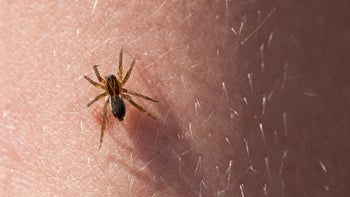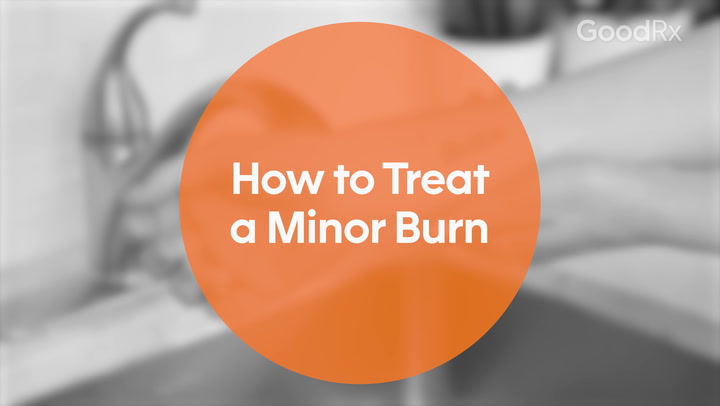
What to Do If A Dog Bites You
Key takeaways:
Dog bites are common and most frequently involve a familiar dog.
Most dog bites are minor, and local wound care is the most important step to prevent infection.
Getting rabies from a dog bite in the U.S. is extremely rare. But wound infection from a dog bite happens in up to 20% of the cases, and it needs antibiotics to treat it.
Almost 40% of households in the U.S. have at least one dog. It’s easy to see why: Dogs are a great source of well-being and stress relief for their owners. But about 4.5 million people are bitten by dogs each year. Children are the most common victims of dog bites and are more likely to be bitten on the head, face, or neck than adults.
Thankfully, most dog bite injuries are minor. However, because dogs carry different bacteria in their mouths, infection is a serious concern. We’ll cover what to do after a dog bite, when to get medical attention, and what treatment options are available.
I’ve been bitten by a dog — what should I do?
If you’re bitten by a dog, the most important thing is to go to a safe place away from the dog that bit you. After this, you should start with local wound care. This includes:
Looking at the wound to see if the skin is broken or not
Washing the wound with mild soap and warm water for 10 to 15 minutes — if the wound is very dirty, you should spend more time on this step
Stopping the bleeding by putting pressure on the wound with a clean cloth until it stops
Applying antibiotic ointment if available — this may decrease the risk of infection
Covering the wound with a clean dry bandage, then placing a bulky dressing over it and wrapping the wound if it’s on an arm or a leg
Search and compare options
What to do after cleaning a dog bite?
After you’ve performed basic first aid of your wound, consider getting medical attention (more on this below). But first, gather information about the dog.
If you can, find out information, such as:
Who owns the dog? Is it your dog, a dog of someone you know, or a stray dog?
Are the dog’s vaccines up to date?
Can someone observe the dog for several days after the bite and watch for signs of rabies?
Other important details include:
Day and time of the injury
The location of the bite(s)
The force of the bite (forceful bites from large dogs can cause deeper damage)
Your medical history
Your last tetanus shot
These details help your medical professional decide how to treat your wound. And they help determine whether your wound is at high risk for infection and needs antibiotics or further evaluation. It can also help them decide if you are at risk for rabies.
What are some signs that I should get medical attention for a dog bite?
Many dog bites can be cared for at home. But you should err on the side of caution. In general, you should get care for all dog bites, especially ones that break the skin.
You’ll want to visit a medical professional if the wound is:
Large or deep
On the head, face, neck, genitals, hands, or feet
Bleeding profusely
Extremely painful
Very swollen, bruised, or deformed
You should also get help if you see something stuck in the wound or if you’re having trouble moving your joints, fingers, or toes. This could be signs of a tendon or muscle injury.
When does a dog bite lead to infection?
Up to 20% of dog bites will lead to an infection. Dogs, like all mammals, have lots of bacteria in their mouths that can cause infection. But there are some factors that increase the risk of infection, such as:
Location of the bite: Bites on the hands, feet, and genitals are most prone to lead to infection. This is because these areas have many layers and compartments that can trap bacteria.
Medical conditions: Conditions like diabetes, heart disease, or a weakened immune system can affect your body’s ability to heal wounds and fight infection.
Waiting too long to clean the wound: Not cleaning your wound quickly enough can also raise the risk of infection.
Puncture wound or a crush injury: Severe injuries from the dog bite can increase the risk.
Closing the wound with stitches: Infection is more likely after wound closure especially if the wound is more than 8 to 12 hours old (or 24 hours on the face).
If possible, it’s best to keep a dog bite open (after applying first aid) so the wound can drain and air out. This can help decrease the risk of infection.
In general, bites on the face usually heal well and without infection. This is because the blood supply to the face is very good.
Dog bite infection symptoms
Dog bites can take one or more days to show signs of infection. It’s important to recheck your wound in 24 to 48 hours for any signs of infection. If you notice any of these signs or symptoms, get medical attention right away:
Swelling
Fever
Increasing pain
Redness
Pus drainage
Do I need to see a doctor for my dog bite if the dog is up to date with its rabies shot?
If your dog bite is from a dog with a rabies shot that’s up to date, that’s very good news. But, you should still consider a medical evaluation, especially if your skin is broken.
Rabies is a fatal disease caused by a virus that’s spread to humans from a bite or scratch from an infected animal. The rabies virus attacks the brain and nervous system. In the U.S., rabies is rarely found in house pets like dogs and cats because of widespread vaccination programs. It’s more commonly found in wild mammals like bats, racoons, skunks, and foxes.
Though extremely rare, a vaccinated dog can still be infected if they’re bitten by or contact the saliva or brain tissue of a wild animal with rabies. Because of this small but deadly risk, it’s still important for the dog who bit you to be quarantined for at least 10 days for any signs of getting sick. Once rabies is in the saliva of an animal, the animal will show signs of rabies or die within 10 days.
Be sure to get care and discuss your treatment options for rabies if you were bitten by a dog that:
Is a stray
Doesn’t have an up-to-date rabies vaccine (or you aren’t sure)
Looks sick or acts strangely or aggressively
Cannot be kept and observed for at least 10 days for signs of rabies
What treatment and medical care will I receive for my dog bite?
When you get dog bite treatment, your wound will be thoroughly cleaned with pressurized water, saline, or an antimicrobial cleanser like povidone iodine. Your wound will be inspected for any soil or particles — like teeth from the dog.
Depending on the location and size of the wound, your healthcare professional may order X-rays, too. X-rays will show if there are any broken bones.
Dog bites are often kept open (not closed with stitches) to help the wound drain and avoid infection. That said, your healthcare professional may close the wound with stitches, depending on the size and location.
Tetanus shots are updated every 10 years, but your healthcare professional may update it sooner if the wound is very severe or dirty. Tetanus is an infection that causes severe muscle spasms (including “lockjaw”), difficulty breathing, and seizures. It’s caused by bacteria called Clostridium tetani, which is found in soil, dust, or a contaminated object.
The bacteria causing tetanus can be in a dog’s mouth if they’ve been playing with soil or dirt. If your wound is full of soil and dirt, it’s important that your tetanus shot is up to date.
Dog bite antibiotics and medications
You may be prescribed oral antibiotics like amoxicillin-clavulanic acid (Augmentin) if there’s a high risk of infection. This is usually the first-choice treatment. Other antibiotics that your healthcare professional may use based on your medical history include:
Cefuroxime
Bactrim
Doxycycline
Levofloxacin
Metronidazole
Clindamycin
The bottom line
Most dog bite injuries are minor, and local wound care is the best first step to treating them and preventing infection. It’s important to gather information about the dog and what happened. This information along with your medical history can help your healthcare professional decide on treatments, such as tetanus vaccine updates and antibiotics. Though rabies is a common concern for people after a dog bite, it’s an extremely rare complication of dog bites in the U.S.
Why trust our experts?


References
American Animal Hospital Association (n.d.). Rabies.
American Veterinary Medical Association. (2022). U.S. pet ownership statistics.
American Society for the Prevention of Cruelty to Animals. (n.d.). Vaccinations for your pet.
Brunker, K., et al. (2018). Rabies virus. Trends in Microbiology.
Centers of Disease Control and Prevention. (2022). Rabies post-exposure prophylaxis (PEP).
Centers of Disease Control and Prevention. (2022). Tetanus.
Cummings, P. (1994). Antibiotics to prevent infection in patients with dog bite wounds: A meta-analysis of randomized trials. Annals of Emergency Medicine.
Gilchrist, J., et al. (2008). Dog bites: Still a problem? Injury Prevention.
Maniscalco, K., et al. (2022). Animal bites. StatPearls.
Memorial Sloan Kettering Cancer Center. (2022). Povidone-iodine topical.
Murray, K., et al. (2009). Rabies in vaccinated dogs and cats in the United States, 1997–2001. Journal of the American Veterinary Medical Association.
Osten, C. (2018). How dogs drive emotional well-being. Psychology Today.
Prescutti, R. J. (2001). Prevention and treatment of dog bites. American Family Physician.
Ruparell, A., et al. (2020). The canine oral microbiome: Variation in bacterial populations across different niches. BMC Microbiology.
Saengseesom, W., et al. (2007). Real-time PCR analysis of dog cerebrospinal fluid and saliva samples for ante-mortem diagnosis of rabies. Southeast Asian Journal of Tropical Medicine and Public Health.
Schalamon, J., et al. (2006). Analysis of dog bites in children who are younger than 17 years. Pediatrics.
Tabaka, M., et al. (2015). Predictors of infection from dog bite wounds: Which patients may benefit from prophylactic antibiotics? Emergency Medicine Journal.
Talan, D., et al. (1999). Bacteriologic analysis of dog and cat bites. New England Journal of Medicine.
Thibault, L., et al. (2018). Dog bites. Canadian Medical Association Journal.













